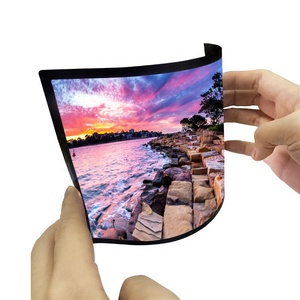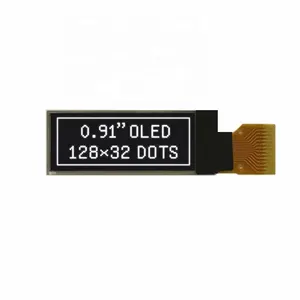I2C OLED Display Overview
I2C OLED displays are a prevalent category of organic light-emitting diode (OLED) screens that communicate through the I2C protocol, a type of serial communication that simplifies the connection between microcontrollers and peripherals. These displays are renowned for their crisp visuals and low power consumption, making them ideal for a variety of applications.
Technical Specifications and Types
There are several types of I2C OLED displays, such as the SSD1306 OLED and the 0.96 OLED display, each with unique characteristics. The SSD1306 is a common driver chip for OLEDs, supporting resolutions typically up to 128x64 pixels. The 0.96 oled screen is a compact display size that offers clear and bright visuals for handheld devices. Users can also find displays like the oled arduino display tailored for integration with Arduino boards, facilitating ease of use in DIY projects and prototypes.
Applications and Integration
I2C OLED screens are versatile, finding their place in industries ranging from medical to automotive. Their ability to operate in various environments makes them suitable for indoor and outdoor applications. The arduino i2c oled is particularly popular among hobbyists and educators for its ease of integration with Arduino platforms, enabling a wide range of interactive projects.
Features and Advantages
The primary advantage of i2c oled displays is their energy efficiency, which is particularly evident in the Chip-on-Glass (COG) OLEDs. These displays are designed without printed circuit boards (PCBs), contributing to a thinner profile and reduced power consumption. The inherent flexibility of i2c displays allows for scalability in function and size, catering to both small-scale projects and large enterprise solutions.
Materials and Environmental Impact
Manufacturers of i2c oled screens often prioritize sustainability. The materials used in the production of these displays, such as the oled ssd1306, are selected to minimize environmental impact without compromising performance. The low power requirement of ssd1306 oled screens not only extends the lifespan of the product but also contributes to a smaller ecological footprint.
Choosing the Right I2C OLED Display
Selecting the appropriate display i2c oled involves considering the application's specific needs, such as size, resolution, and environmental conditions. While the oled i2c protocol simplifies connectivity, understanding the nuances of each type, like the oled ssd 1306 or the 0.96 oled display, ensures the right fit for the intended use. Alibaba.com's platform offers a diverse range of options to meet these varied requirements.











































 浙公网安备 33010002000092号
浙公网安备 33010002000092号 浙B2-20120091-4
浙B2-20120091-4